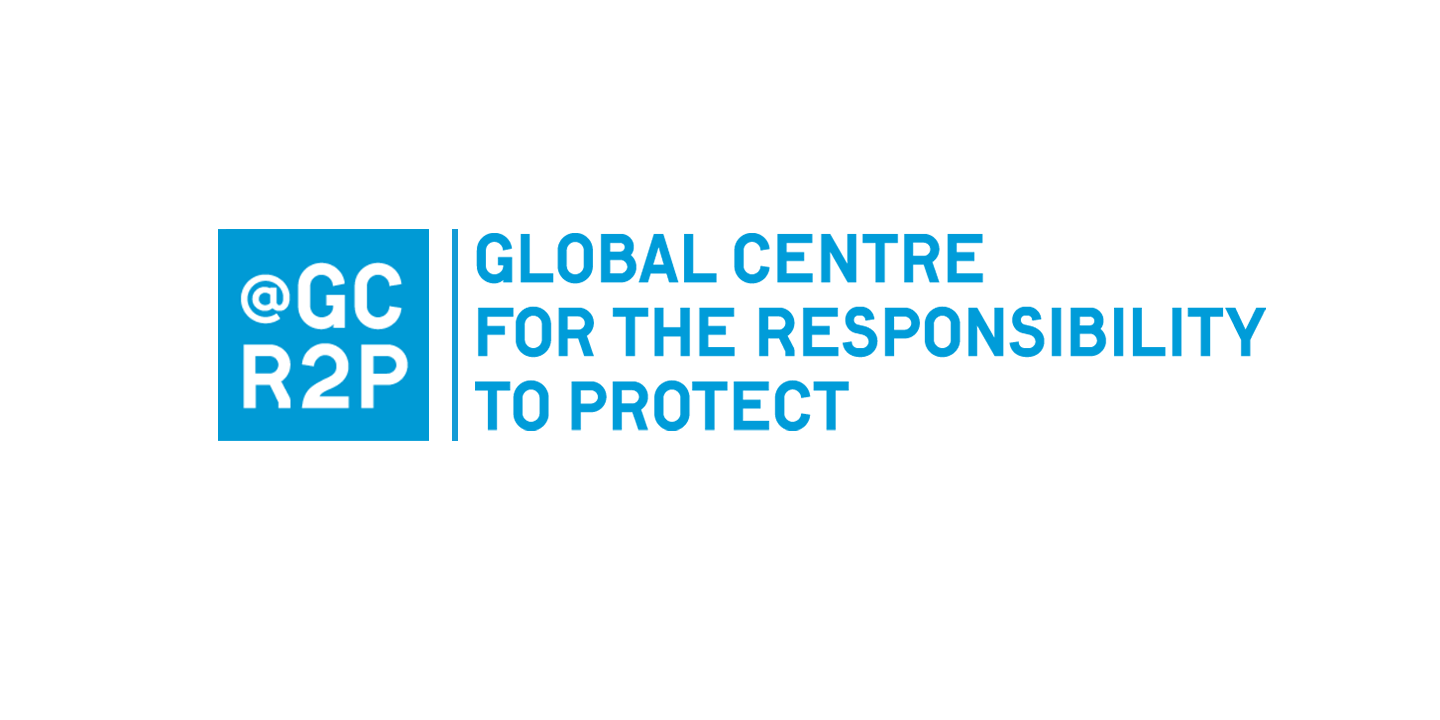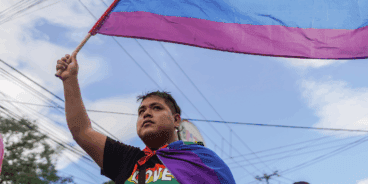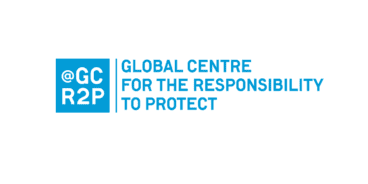
Summary of the UN Secretary-General’s 2022 Report on R2P, The Responsibility to Protect: Prioritizing Children and Young People
The fourteenth report of the UN Secretary-General on the Responsibility to Protect (R2P), entitled “The Responsibility to Protect: Prioritizing Children and Young People,” considers the special needs of children and youth in contexts of genocide, war crimes, ethnic cleansing and crimes against humanity and the extent to which they are targeted and impacted by these crimes. In doing so, the Secretary-General analyzes the distinct atrocity risks that children and youth face and provides an overview of advances that have been made in protecting them from atrocity crimes. The Secretary-General reflects on major priorities for protecting children and youth from atrocity crimes before concluding with recommendations on how to better protect children and youth.
KEY POINTS
The Global Centre for the Responsibility to Protect would like to highlight the following key points from the report:
-
- In both conflict and non-conflict settings, children and youth face distinct risks when it comes to the commission of mass atrocity crimes, including through being intentionally targeted, abused or exploited.
- In situations of armed conflict, children continue to be killed and maimed, including in indiscriminate attacks on schools and hospitals, recruited into armed forces and armed groups and detained, tortured, abducted, and subjected to rape and other forms of sexual violence.
- Atrocity crimes impact children and youth in distinct ways, including through displacement, starvation, the disruption of key social services, such as education, and long-term psychological and physical impacts from being subject or witness to grave violations.
- Despite the fact that children and youth face distinct atrocity risks, the international community has failed to tailor atrocity prevention to children and youth. Moreover, while the international community has made significant progress in the protection of children’s rights in general, few of these measures address atrocity prevention.
- In order to address this gap, the Secretary-General urges states to prioritize seven key areas, including regular monitoring of national atrocity risks, honoring previous commitments to protect children’s rights, building societies that are tolerant and accepting of diversity, and pursuing accountability measures for atrocity crimes.
- The Secretary-General also urges states to center children and youth in their atrocity prevention efforts by approaching atrocity prevention through the lens of children’s rights and the distinct threats that children and youth face.
While the Secretary-General’s report broadly addressed risks faced by children and youth in atrocity situations, the assessment could have been enhanced by real-world examples from countries where populations are currently experiencing or are at risk of atrocity crimes.
SECTION I: INTRODUCTION
The Secretary-General provides a brief overview on the history of the principle of the Responsibility to Protect (R2P), from its establishment in 2005 at the UN General Assembly’s World Summit to the norm being subsequently mentioned in 86 resolutions from the UN Security Council, 32 resolutions from the UN General Assembly and 60 resolutions from the UN Human Rights Council. The report also highlights the Group of Friends of the Responsibility to Protect in New York and Geneva and the Global Network of R2P Focal Points, for which the Global Centre serves as Secretariat. The section also briefly introduces the distinct atrocity risks that children and youth face and how they relate to the children and armed conflict, youth, peace and security and sustainable development agendas.
SECTION II: RISK OF ATROCITY CRIMES AND THEIR IMPACT ON CHILDREN AND YOUNG PEOPLE
The Secretary-General highlights that children and youth are particularly vulnerable to atrocity crimes and are impacted in different ways. In armed conflict and in peaceful situations, children and youth can be intentionally targeted, abused or exploited in atrocity situations because perpetrators often seek to instill “maximum terror.” For instance, children continue to be recruited and used by armed forces and groups as child soldiers, which can constitute a war crime. Children and youth are also being killed and injured in attacks directed at civilians and civilian infrastructure. Young women and girls, but also young men and boys, are disproportionately vulnerable to rape and other forms of sexual violence. Depending on the context of these crimes, they may constitute crimes against humanity, war crimes, genocide or ethnic cleansing.
Children and youth are also vulnerable to or victims of atrocities in non-armed-conflict settings. Identity-based marginalization, exclusion, hate and intolerance can be acutely felt by children. Research also suggests that young people are disproportionately victimized and traumatized by mass violence, terrorism and repressive governments in both armed conflict and peaceful settings.
Children and youth who survive and/or witness atrocity crimes face unimaginable, long-term physical and psychological trauma. During episodes of mass violence, community and social support structures and services that might normally help children and youth process their experiences, such as schools, may be unavailable or under attack, making recovery difficult. The loss of access to education is one of the most important and long-enduring effects of atrocity crimes on children and youth. Many children never return to school after their education is disrupted, and this increases their vulnerability to various forms of exploitation and abuse. This disruption of social services is exacerbated by the fact that the commission of atrocity crimes is often associated with large-scale displacement.
SECTION III: ADVANCES IN PROTECTING CHILDREN AND YOUNG PEOPLE FROM ATROCITY CRIMES
The Secretary-General provides an overview of the steps that states and the UN have taken to better protect children and youth from grave abuses. The international community has overwhelmingly supported the international framework for the protection of children’s rights in both armed conflict and peace, with all states but one joining the Convention on the Rights of the Child. The Secretary-General also highlights widespread support for the Convention’s Optional Protocol on the involvement of children in armed conflict; the Worst Forms of Child Labour Convention (1999); the Paris Principles and Guidelines on Children Associated with Armed Forces or Armed Groups (2007); the Vancouver Principles on the Prevention of the Recruitment and Use of Child Soldiers (2017); and the Safe Schools Declaration (2015), among others. Regional organizations have also advanced normative and institutional frameworks for the protection of children. The UN Security Council has also strengthened child protection through the Children and Armed Conflict agenda (adopted in 1996) and the establishment of the Monitoring and Reporting Mechanism on grave violations against children in 2005.
While these measures do not overtly operate through an atrocity prevention lens, they still have the capacity to help prevent atrocities and are consistent with efforts aimed at upholding R2P.
Additionally, the Secretary-General notes that there has been growing recognition in recent years of the contribution that youth can make to preventing conflict and peacebuilding and creating cohesive and tolerant societies in which the risks of atrocities are reduced. Some regional examples include the African Youth Charter, the Ibero-American Convention on Youth Rights and the Council of Europe’s Youth Strategy.
These complementary areas of work on Children and Armed Conflict and on Youth, Peace and Security are the building blocks of a strategy to protect children and youth from atrocity crimes and to ensure the meaningful participation of youth in efforts to prevent and address atrocity crimes. However, the priorities identified by these two agendas do not comprehensively encapsulate the suite of options available to better protect children and youth from atrocity crimes.
From an atrocity prevention perspective, the priorities and accomplishments of these two agendas leave three key gaps:
-
- The children in armed conflict agenda is dedicated to armed conflict contexts and tends to focus on either addressing the causes of armed conflict or alleviating the effects of mass violence once it is already underway. However, the risk factors for atrocity crimes are similar, but not identical, to those for armed conflict. Additionally, this agenda does not place weight on prevention.
- While grave violations against children are documented by the Monitoring and Reporting Mechanism, much work remains to be done in understanding the extent to which youth, too, are disproportionately vulnerable to and impacted by atrocity crimes.
- The children and armed conflict agenda does not address the critical role that children and youth can play in building sustainable peace.
SECTION IV: SEVEN PRIORITIES TO PROTECT CHILDREN AND YOUNG PEOPLE FROM ATROCITY CRIMES
The Secretary-General proposes seven priorities which, if pursued vigorously by national governments, could be particularly transformative for the protection of children and youth from atrocity crimes.
Identify and respond to early warnings
Previous reports on the responsibility to protect have highlighted the importance of collecting and analyzing early warning information. As children and youth may be attuned to growing unrest, discrimination, hate speech and threats of gender-based violence, the potential insights, contributions and engagement of children and youth should be given special consideration and supported in the design of early warning systems, with due consideration to the do-no-harm principle. Early warning information gathered from children and youth must feed into processes enabling rapid responses from the local to the international level.
Honor commitments for the protection of children and young people
The Secretary-General reminds states that their responsibility to protect their own populations from atrocity crimes is essentially a restatement of commitments already enshrined in international law. Therefore, the Secretary-General urges states to fully implement the relevant legal instruments to which they are already party, join those that are outstanding, and incorporate these instruments into domestic legislation and regional legal instruments.
Promote inclusion and socio-economic equality
States must confront enabling conditions for atrocity crimes. Addressing discrimination in all its forms by adopting laws, policies, plans and budgets to ensure that everyone may participate fully in economic, social and political life regardless of ethnicity, culture, religion, race or gender, is one of the most important actions that states can take to protect children and youth from atrocities in the long term in this regard. States should also take steps to advance socio-economic equality, including through fulfilling the Sustainable Development Goals and ensuring equitable access to education.
Value difference and diversity, manage intolerance and hate
Intolerance of difference and diversity, and its manifestation in derogatory stereotyping, stigmatization and incitement to hostility and violence can contribute to the commission of atrocity crimes. States should therefore constructively manage diversity in order to combat intolerance, including through raising awareness of different culture and religious beliefs and adopting laws and creating institutions that protect groups from identity-based harassment and criminalize incitement to hatred and violence.
Leverage education for peace
Education aids in reducing vulnerability of children and youth to atrocity crimes, including by lowering their exposure to exploitation and enhancing their socio-economic prospects. Education sector actors can play a critical role in building societies that are inclusive, tolerant, respectful of diversity and able to manage conflict. This can be accomplished through developing national curricula that promote understanding of others, teaching a balanced account of history, and offering a dedicated peace education.
Pursue accountability for atrocities against and affecting children and young people
The report reaffirms the importance of accountability as a critical deterrent for future perpetrators of atrocities and as one of the most important tools for prevention. However, numerous challenges relevant to accountability for crimes against children persist, including lack of capacity, lack of political will, and the fact that accountability mechanisms often lack child-appropriate investigation, documentation and prosecution strategies. Children and youth also have an important role to play in accountability, including through truth-telling and truth seeking in transitional justice processes.
Put children and young people at the center of atrocity prevention
Advancing an agenda to reduce the risk of atrocity crimes and implementing the above priorities requires states to center children and youth. The report emphasizes that every aspect of atrocity prevention – from planning to implementation to monitoring and evaluation – should be guided by child rights principles. Putting children and youth at the center of atrocity prevention means recognizing the role that they can play not just as beneficiaries of interventions, but as partners in peace.
SECTION V: CONCLUSIONS
The Secretary-General concludes by noting that the disproportionate vulnerability of children and youth to atrocity crimes calls into question the international community’s stated commitment to protect populations from atrocity crimes. The Secretary-General emphasizes that “children and youth should be at the very heart of, and impetus for, our efforts to prevent these crimes.” The report emphasizes the importance of national ownership of the protection of children and youth from atrocity crimes and the need for a whole of government approach to addressing risks – and but also notes that governments need the sustained support of and engagement with civil society and groups engaging with children and youth, multilateral partners, and UN funds and programs dedicated to children and youth agendas.
The Secretary-General calls on all member states to do more to support and prioritize atrocity prevention – with a focus on children and youth – at all levels of government and to implement a set of practical recommendations in this regard:
-
- Ensure that systems are in place at the national level to monitor and respond to early warnings of atrocity crimes, and that such systems can collect and analyze gender and age specific data.
- Join and implement universal and regional legal instruments relevant to the protection of children and youth.
- Promote socio-economic equality by adopting laws, policies, plans and budgets to ensure that everyone can fully participate in economic, social, and political life regardless of ethnicity, culture, religion, race or gender.
- Address identity-based intolerance and hate speech.
- Leverage the education sector to build societies that tolerate and respect diversity.
- Hold perpetrators of atrocity crimes against children accountable, and ensure that such accountability mechanisms have the necessary expertise to investigate, document and prosecute and adjudicate crimes against children.
- Place children and youth at the center of atrocity prevention.
- Strengthen child protection capacities and work with the UN to improve analysis and develop strategies to prevent grave violations.
Read Next
Related Content

